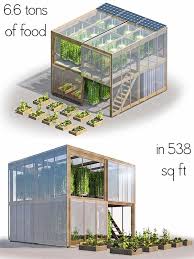
Breaking News
 BREAKING EXCLUSIVE: "This Wasn't Panic Buying Or Selling- IT WAS THEFT!"
BREAKING EXCLUSIVE: "This Wasn't Panic Buying Or Selling- IT WAS THEFT!"
 Somali Fraud is Miniscule Compared to Federal Reserve FRAUD
Somali Fraud is Miniscule Compared to Federal Reserve FRAUD
 Candace Owens Admits That Nevada Congressman Amodei Was Not Present...
Candace Owens Admits That Nevada Congressman Amodei Was Not Present...
 2025: The Year the Government Stopped Pretending It Cared About Freedom
2025: The Year the Government Stopped Pretending It Cared About Freedom
Top Tech News
 Laser weapons go mobile on US Army small vehicles
Laser weapons go mobile on US Army small vehicles
 EngineAI T800: Born to Disrupt! #EngineAI #robotics #newtechnology #newproduct
EngineAI T800: Born to Disrupt! #EngineAI #robotics #newtechnology #newproduct
 This Silicon Anode Breakthrough Could Mark A Turning Point For EV Batteries [Update]
This Silicon Anode Breakthrough Could Mark A Turning Point For EV Batteries [Update]
 Travel gadget promises to dry and iron your clothes – totally hands-free
Travel gadget promises to dry and iron your clothes – totally hands-free
 Perfect Aircrete, Kitchen Ingredients.
Perfect Aircrete, Kitchen Ingredients.
 Futuristic pixel-raising display lets you feel what's onscreen
Futuristic pixel-raising display lets you feel what's onscreen
 Cutting-Edge Facility Generates Pure Water and Hydrogen Fuel from Seawater for Mere Pennies
Cutting-Edge Facility Generates Pure Water and Hydrogen Fuel from Seawater for Mere Pennies
 This tiny dev board is packed with features for ambitious makers
This tiny dev board is packed with features for ambitious makers
 Scientists Discover Gel to Regrow Tooth Enamel
Scientists Discover Gel to Regrow Tooth Enamel
 Vitamin C and Dandelion Root Killing Cancer Cells -- as Former CDC Director Calls for COVID-19...
Vitamin C and Dandelion Root Killing Cancer Cells -- as Former CDC Director Calls for COVID-19...
Flatpack Urban Farm Grows 6.6 Tons of Food in 538 Square Feet

This flatpack urban farm only takes up 538 square feet, but its creators say that it can yield as much as 6 tonnes (6.6 tons) of fresh produce per year.
Danish company Human Habitat has developed a hydroponic garden system that requires just 538 square feet of space to grow fresh food. Its two story design doubles the amount of food that can be grown per square foot. Not only can their flatpack urban farm be squeezed into almost any available space in cities, it could also be set up anywhere access to fresh food is needed.
It is called an Impact Farm by its creators, Mikkel Kjaer and Ronnie Markussen. The flat pack hydroponic garden design allows it to be shipped virtually anywhere. The Impact Farm can be unpacked, set up and be in operation in just 10 days. and is suitable for both commercial and community needs. It is capable of growing greens (and microgreens), vegetables, herbs, and fruiting plants in its two-story frame. The produce is grown hydroponically, which means the only thing necessary for growing fresh food locally is water.
"We wanted to reconnect people to food by giving them a green space that brings nature back into our cities," Kjaer tells Collectively. By giving people a useful skill to learn and opportunities for employment, urban farm addresses the problems of low employment and inaccessibility to fresh food. Food deserts are of particular interest to the founders. Those are inner city neighborhoods that are under-served by traditional grocery stores.
The food desert issue has been addressed recently by the USDA, which administer the SNAP program in the US. It will now require merchants who service people on Food Stamps to provide fresh food instead of just cookies, snacks, and other highly processed packaged foods. A nearby Impact Farm could help fill that need.
The first Impact Farm hydroponic garden is now operating in Copenhagen, Denmark. There are plans to build more of the urban farms in other European cities. The founders are also investigating the US market. The Impact Farm is similar in nature to the Freight Farms concept that started in Boston recently. That company re-purposes shipping containers to become hydroponic gardens that can be trucked anywhere.



